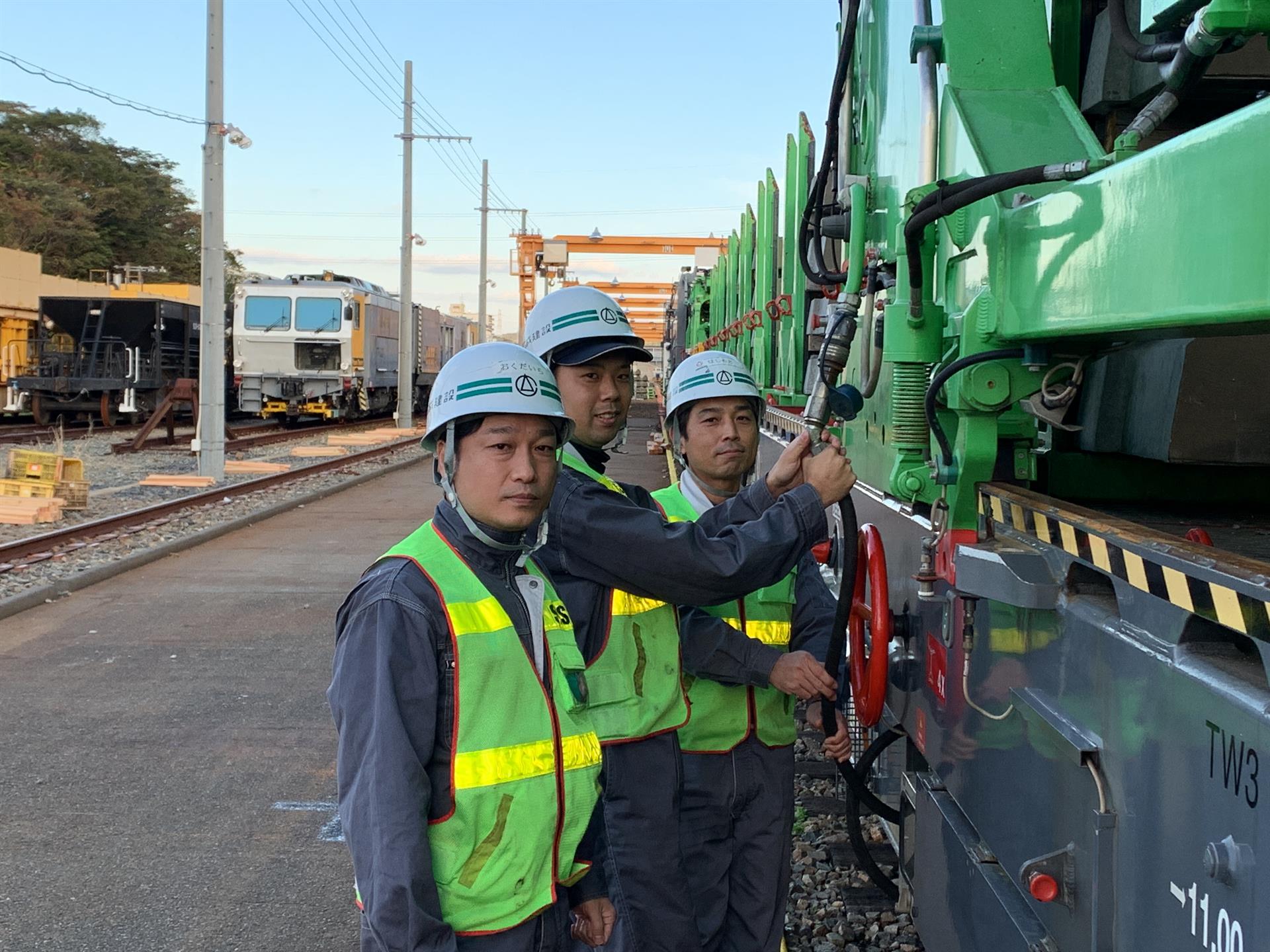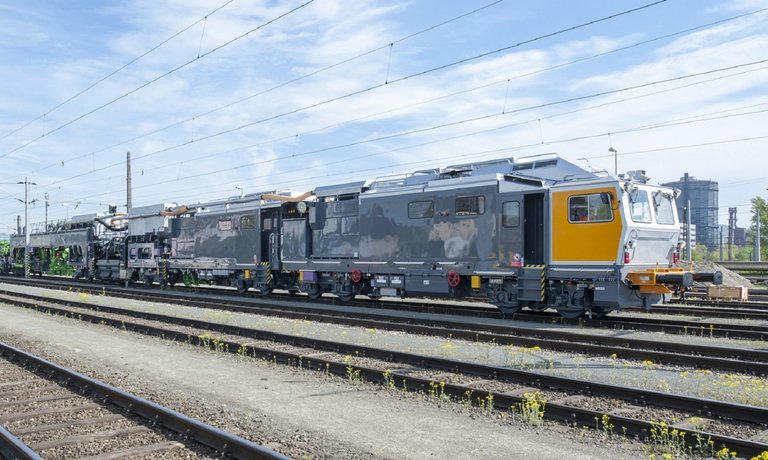Key facts:
- Owner: Kosei Kensetsu Co., Ltd.– subsidiary of West Japan Railway
- Founded in 1941
- Main line: Osaka–Hakata
- Total length: 5007.1 km
- Maximum speed: 300 km/h (N700 series)
- Sleepers exchanged per shift: up to 198
- Machine: SES 170 (2016)
- Last train from Shiniwakuni Station to Osaka: 21:53
- First train from Shiniwakuni Station to Hakata: 06:19
Fighting earthquakes: safety for railway infrastructure and passengers
What does safety mean when we talk about earthquakes? If you can say one thing about tectonic vibrations, it’s that you can’t prevent them. That’s why there are about 5,000 earthquakes every year in Japan alone. Most vibrations are minor, but major ones also occur frequently. They are known to cause structural damage and don’t spare railway infrastructure. That’s why the island state is taking precautionary measures to prevent damage caused by earthquakes, for example, on the San’yō-Shinkansen line in western Japan.
Kosei Kensetsu, a subsidiary of the West Japan Railway Company, is taking various structural measures to improve travel safety and to minimise damage. Special guide rails are one of these measures. A new type of sleeper is used to install them. That’s why the plan is to exchange all sleepers on the line as quickly as possible. This is where Plasser & Theurer’s SES 170 comes into play – and along with it one of the most important machine operators in western Japan: Ryo Ishibashi. Despite his crucial job he is dubbed “The Troublemaker”.
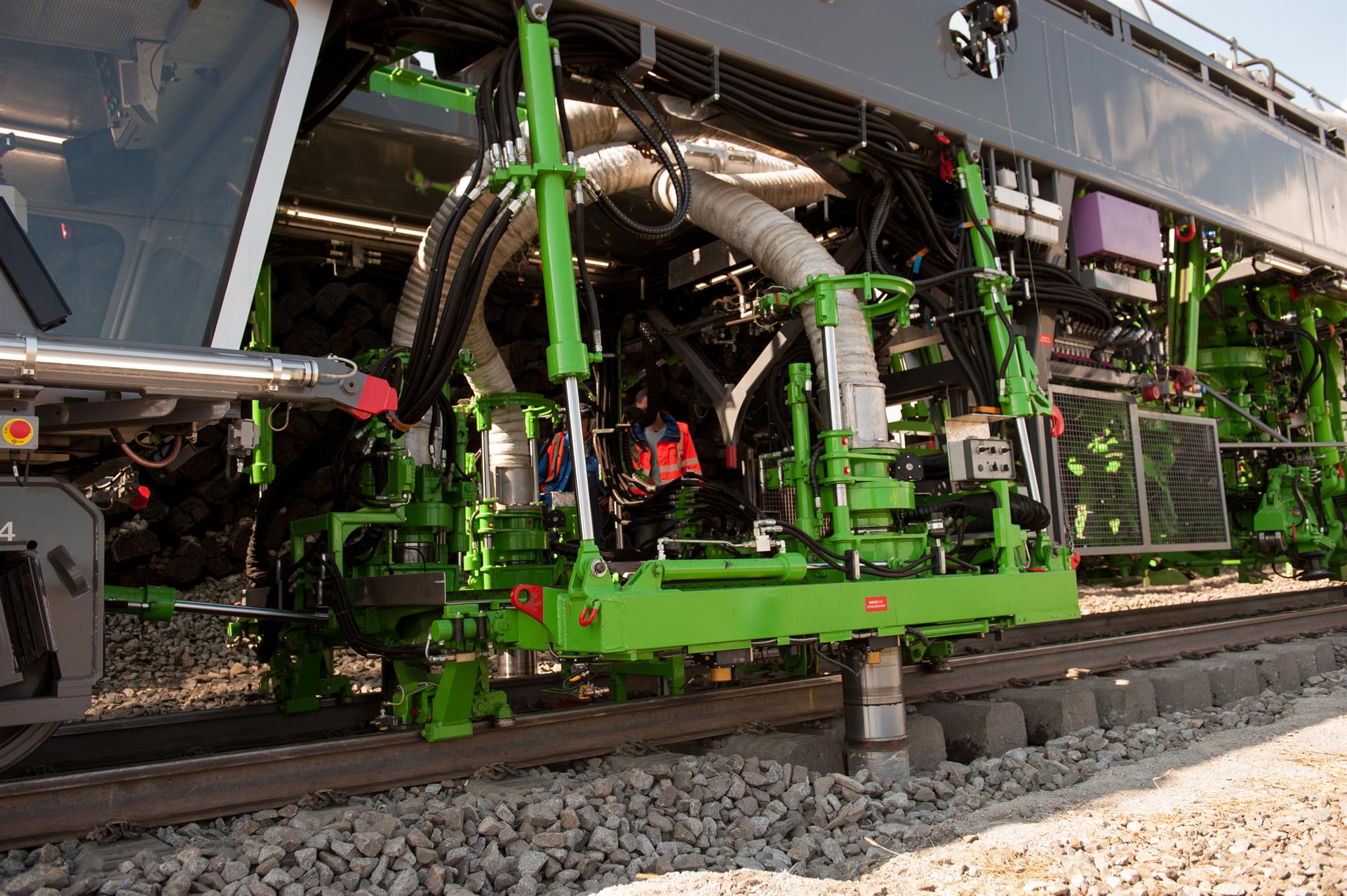
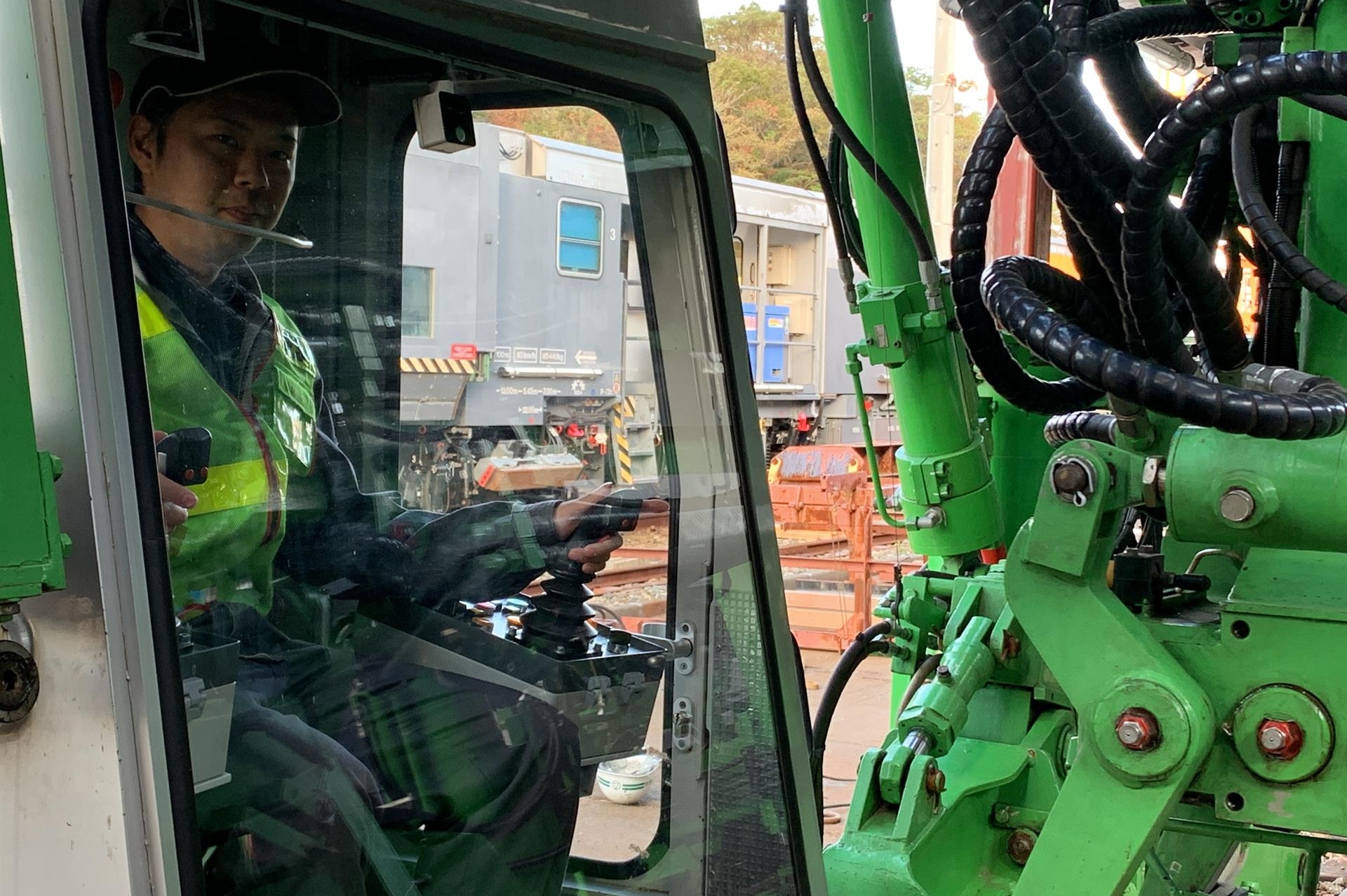
Ryo’s core team consists of his foreman, Mr. Hashimoto, and the project manager, Mr. Okudaira. They inspect the machine before its night shift. Despite the routine nature of their work, you can tell they are passionate about their jobs and the machines. Ryo explains the purpose and design of the SES 170.
“The core task of the SES 170 is to exchange sleepers and to restore the track geometry. The sleeper exchange system is 94 m long and consists of three main components. At the back, there is the transport wagon with the gantry unit and the crew cab. The “heart” of the machine is in the middle: that's where I work. It contains the sleeper manipulator, the suction unit with the ballast wagon, and the ballast unit. And then there is the power wagon at the front, of course.”
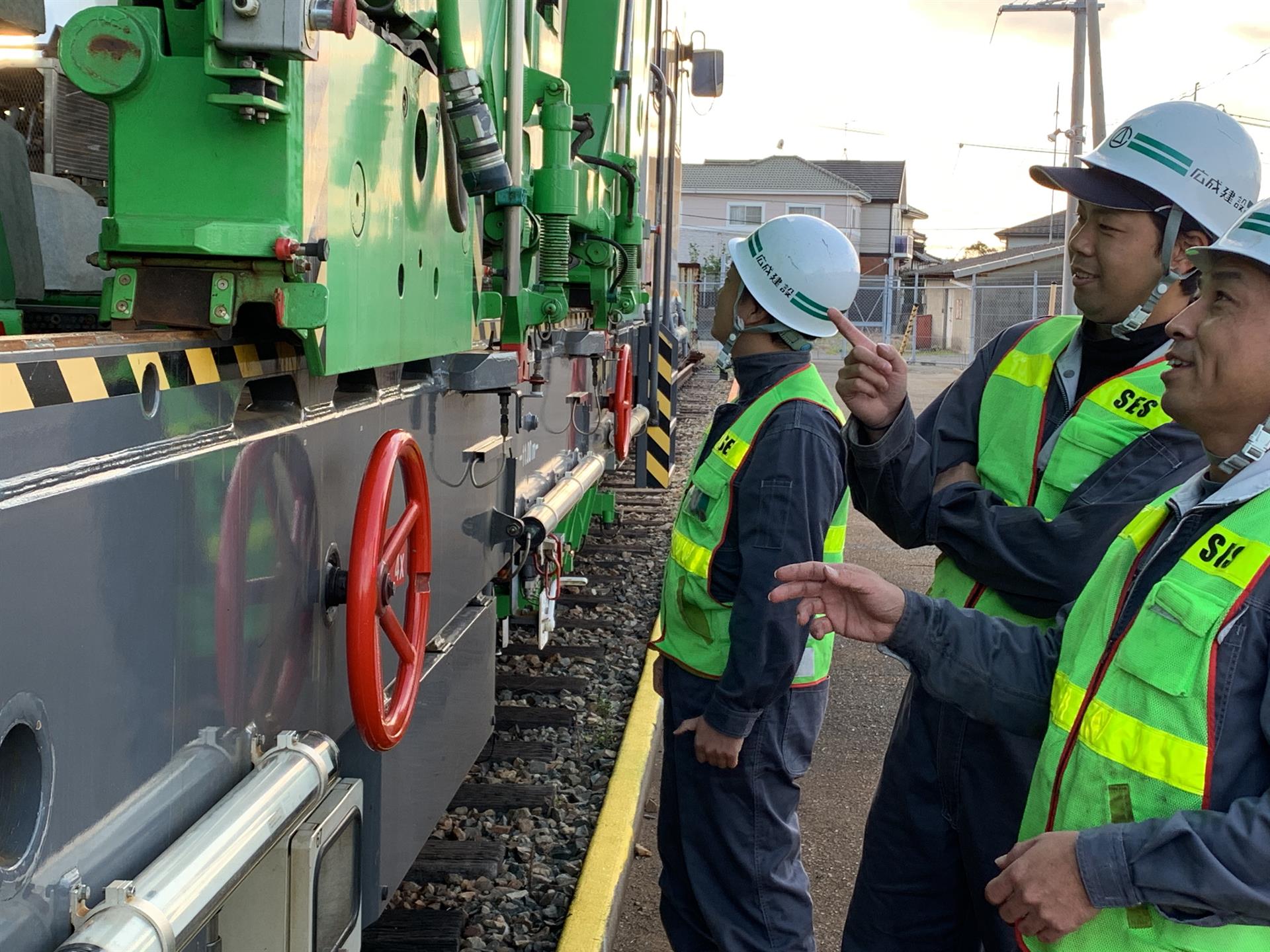
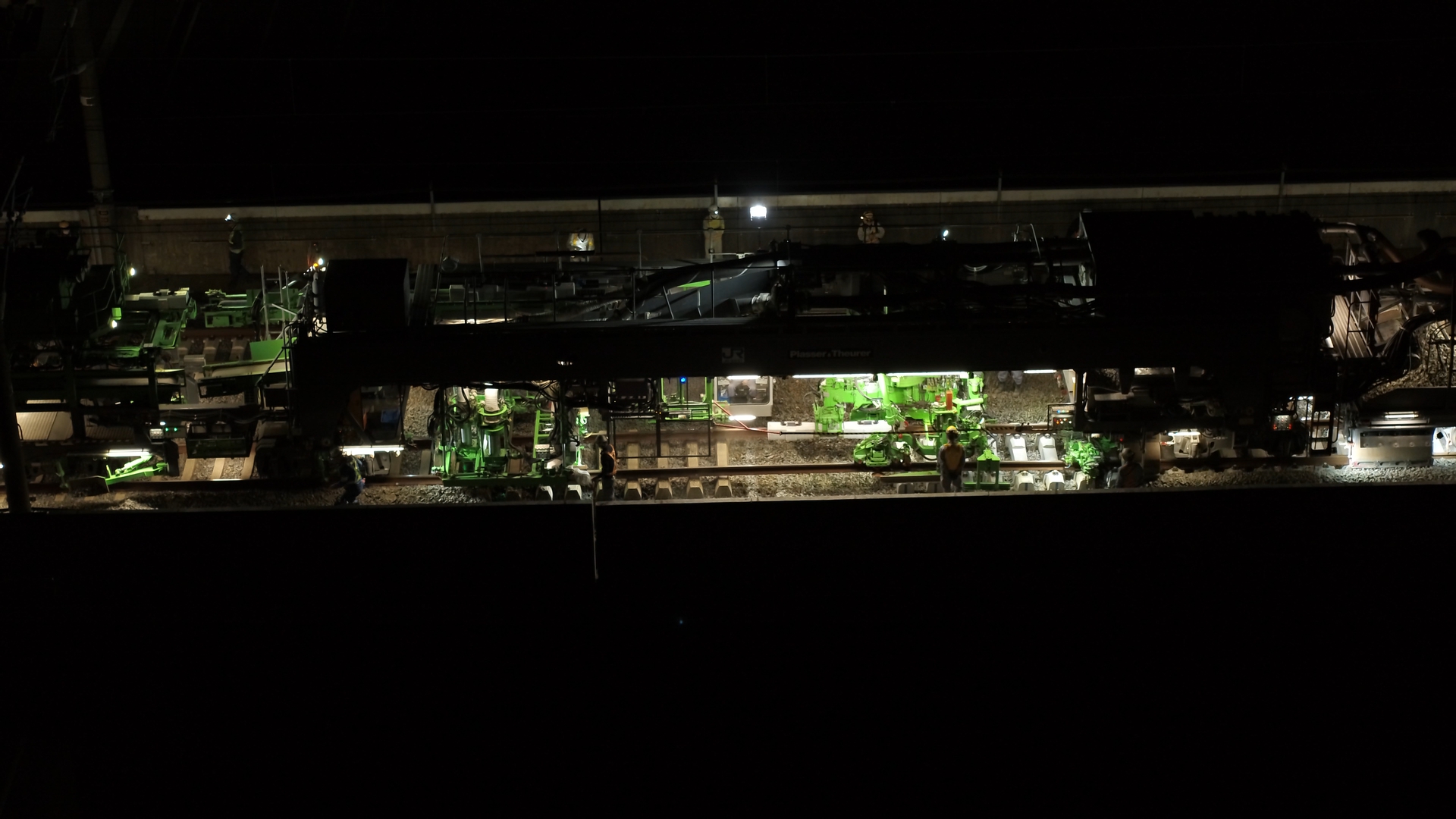
The first time is the toughest
Ryo still remembers his first assignment distinctly. “It felt like a baptism of fire. My first night shift inspired my colleagues to give me my nickname,” says the young machine operator with a laugh.
“That night I was sitting at the control desk of the SES 170’s manipulator. Imagine this gigantic machine, travelling on a main high-speed line. And it was also the first time it was in operation. Whoever is operating the control desk has a great deal of responsibility. There is no doubt about that. That’s why I had to prepare myself mentally beforehand.”
“In my head, I went over the process I knew from training courses and exercises with the simulator several times. First, you have to cautiously turn the unfastened sleepers under the lifted rails by 90 degrees. The old sleepers are now in a position parallel to the tracks. Then, you carefully remove them one after the other. Now the gantry unit takes them to the very back for storage, and then it returns with the new sleepers. So far, so good. Up to this point, everything was going perfectly - exactly how it went during training with the simulator...”
“So far, there have been two derailments on the Shinkansen lines due to major earthquakes. Operating the SES 170, I help to make this line safer and to prevent train accidents. It’s a job that makes me proud and that I have a lot of respect for. At the end of the day, the goal is not only to prevent damage to trains and railway lines, but to make rail travel safe for passengers.” - Ryo Ishibashi
Ryo is a focused and professional worker. But it is precisely in this situation that something unheard of happens during Ryo’s first assignment.
“Everything is running smoothly. Now it’s my turn. I have to take the new sleepers and place them parallel to the track. When I wanted to lower the first sleeper with the manipulator, there was a terrible noise: a metallic sound I had never heard before. I was hoping faintly that everything would be okay, but it wasn’t. The control unit wasn’t working.”
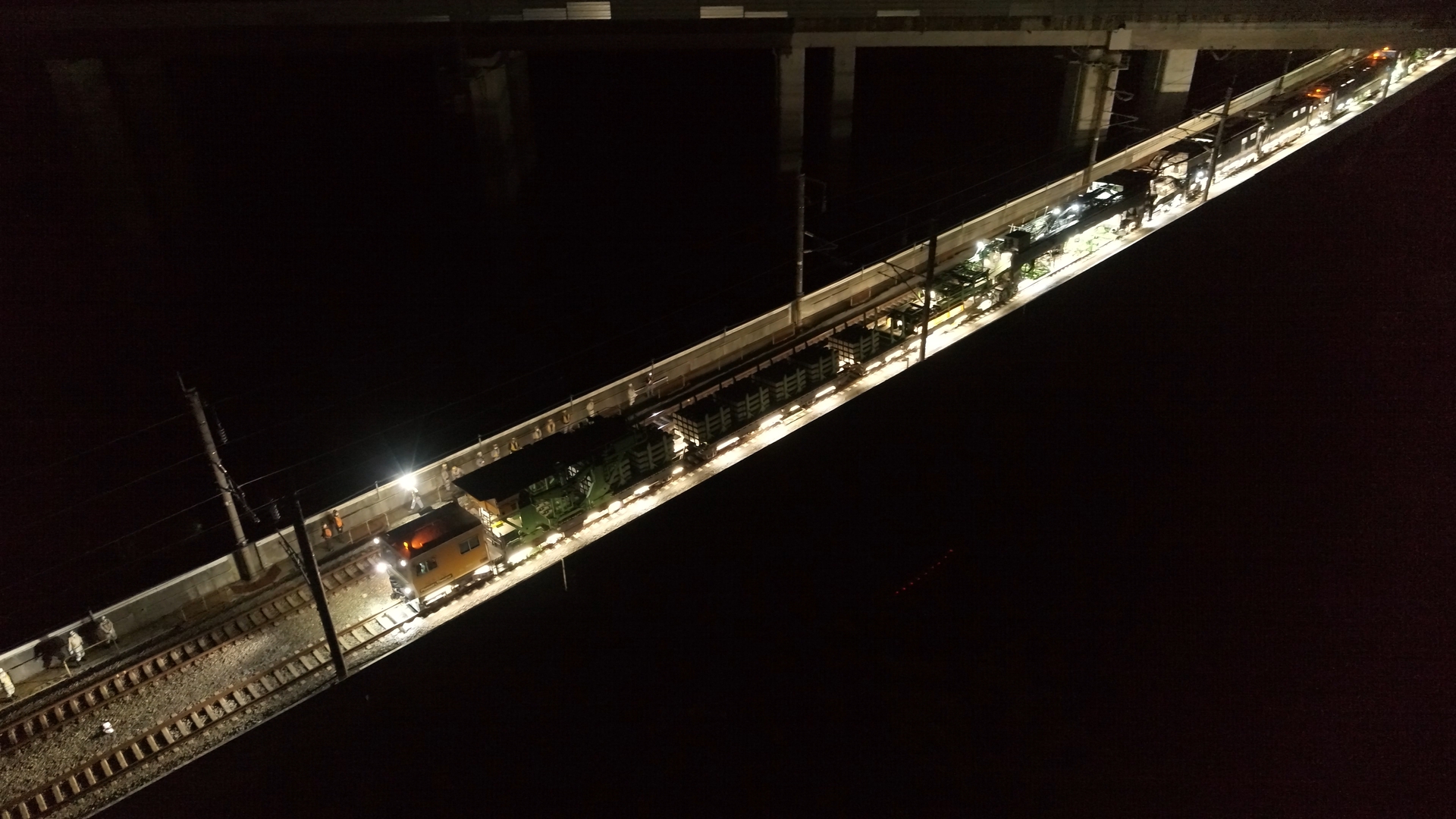
"No one knew what had happened. We had been practising a lot with the machine in the depot and had eliminated all potentially critical aspects. That situation was completely new to us. I almost panicked. It seemed like time was standing still. What had I done wrong? We never managed to install our very first new sleeper on the track that night. Finally, we had to act. We decided to manually install an emergency sleeper.”
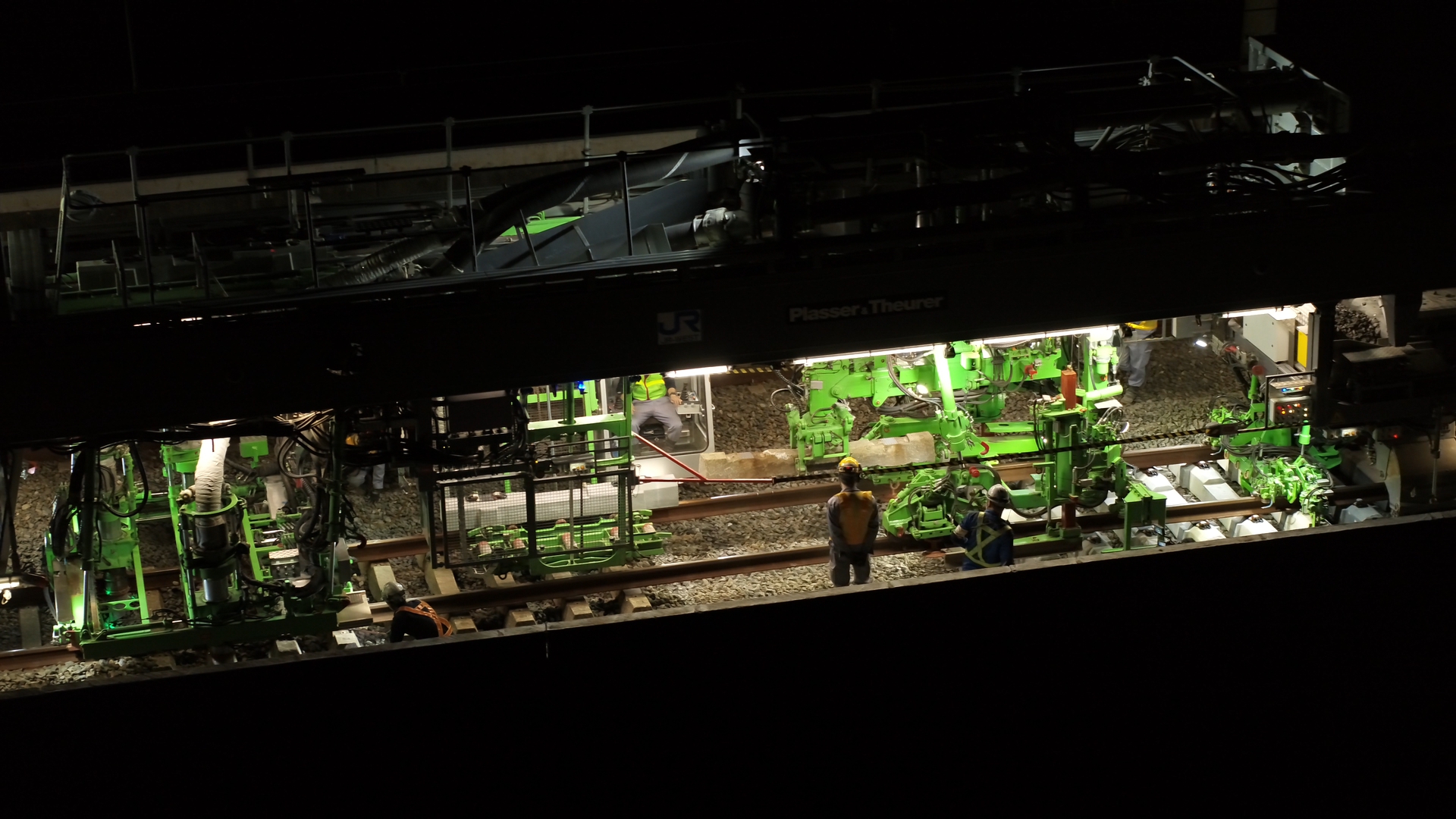
Ryo was very disappointed. He had been looking forward to this important day and his first assignment. The machine had to be taken to the depot before the first high-speed train arrived.
“Luckily, we managed to prevent the worst from happening. The machine was carefully inspected. We found that an incorrect movement had probably caused one of the sensors to stop working. Luckily, the error was corrected quickly. The following night, work continued without any problems. Everything went fine. But even later, I wasn’t exactly lucky during my assignments. I understand why my colleagues kept an eye on me,” says Ryo jokingly.
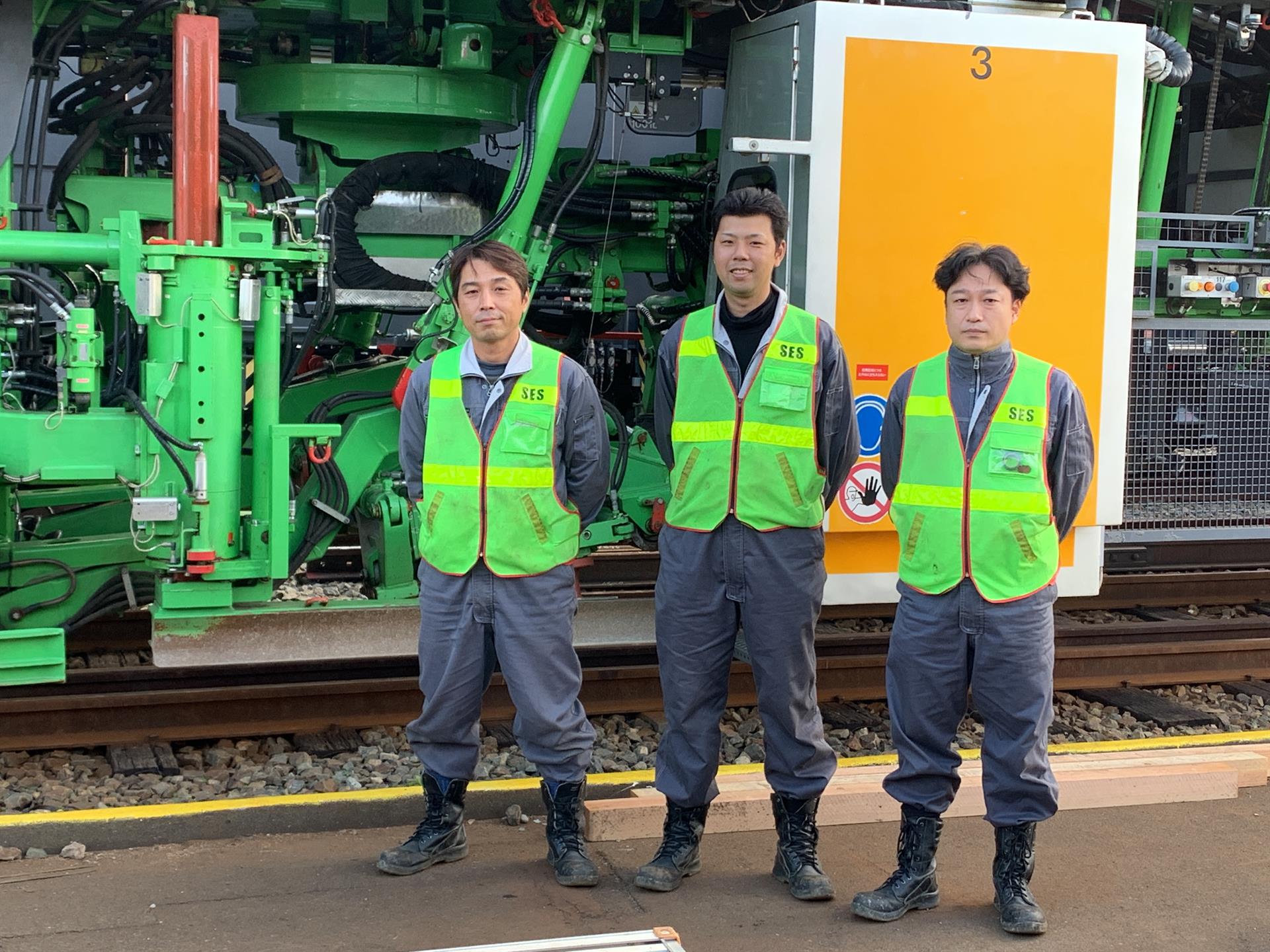
“Unfortunately, the very same part caused other problems during my later assignments. Obviously, everyone knows the errors weren’t my fault. Still, my colleagues have been calling me “The Troublemaker” ever since. But there’s a positive side to it, too. These incidents have taught me a lot. Today, I am one of three people who are responsible for the state-of-the-art sleeper exchange system. That’s definitely a task with a lot of responsibility. So far, there have been two derailments on the Shinkansen lines due to major earthquakes. Working here, I help to make this line safer and to prevent train accidents. It’s a job that makes me proud and one that I have a lot of respect for. At the end of the day, the goal is not only to prevent damage to trains and railway lines, but to make rail travel safe for passengers."

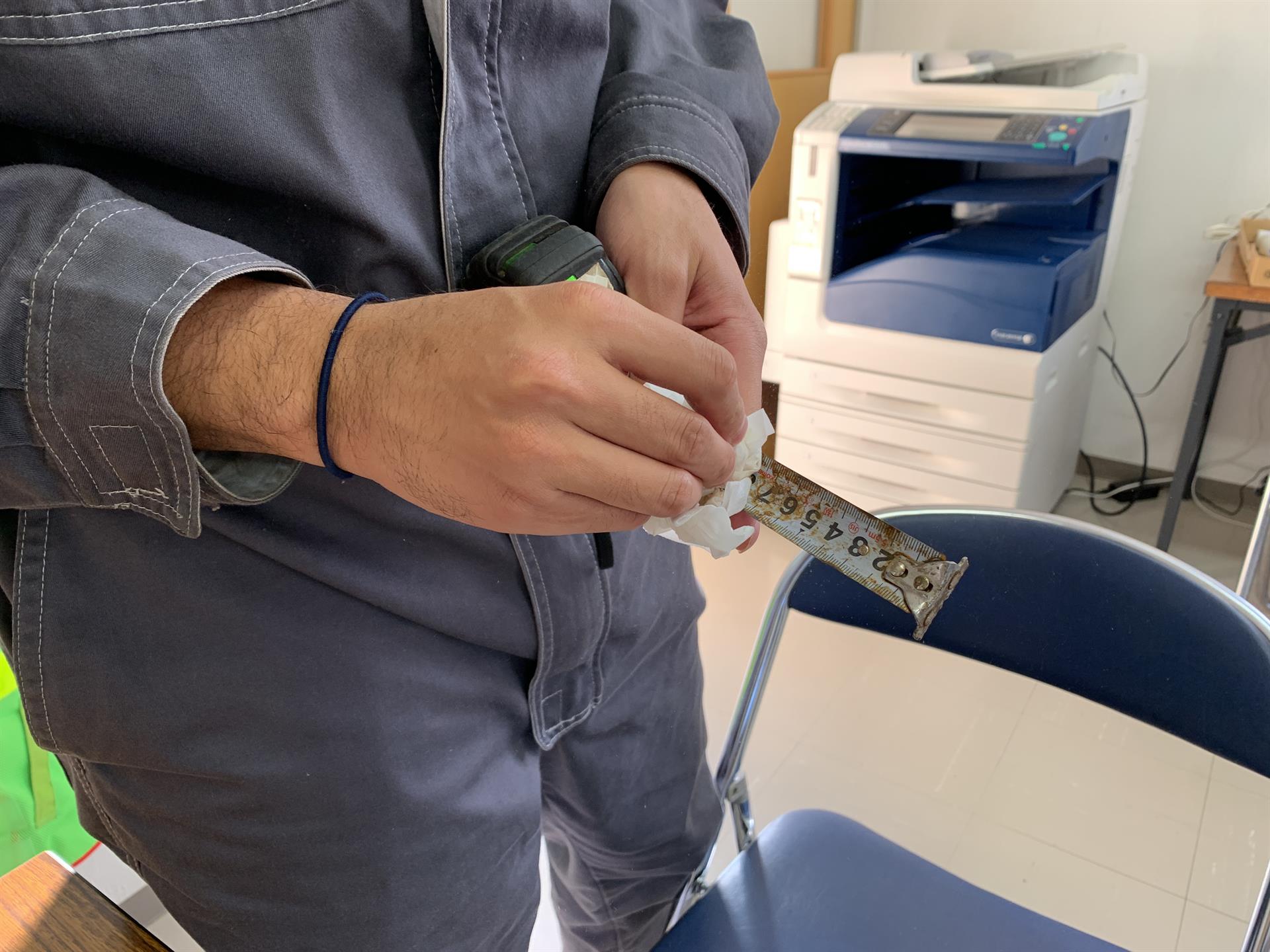
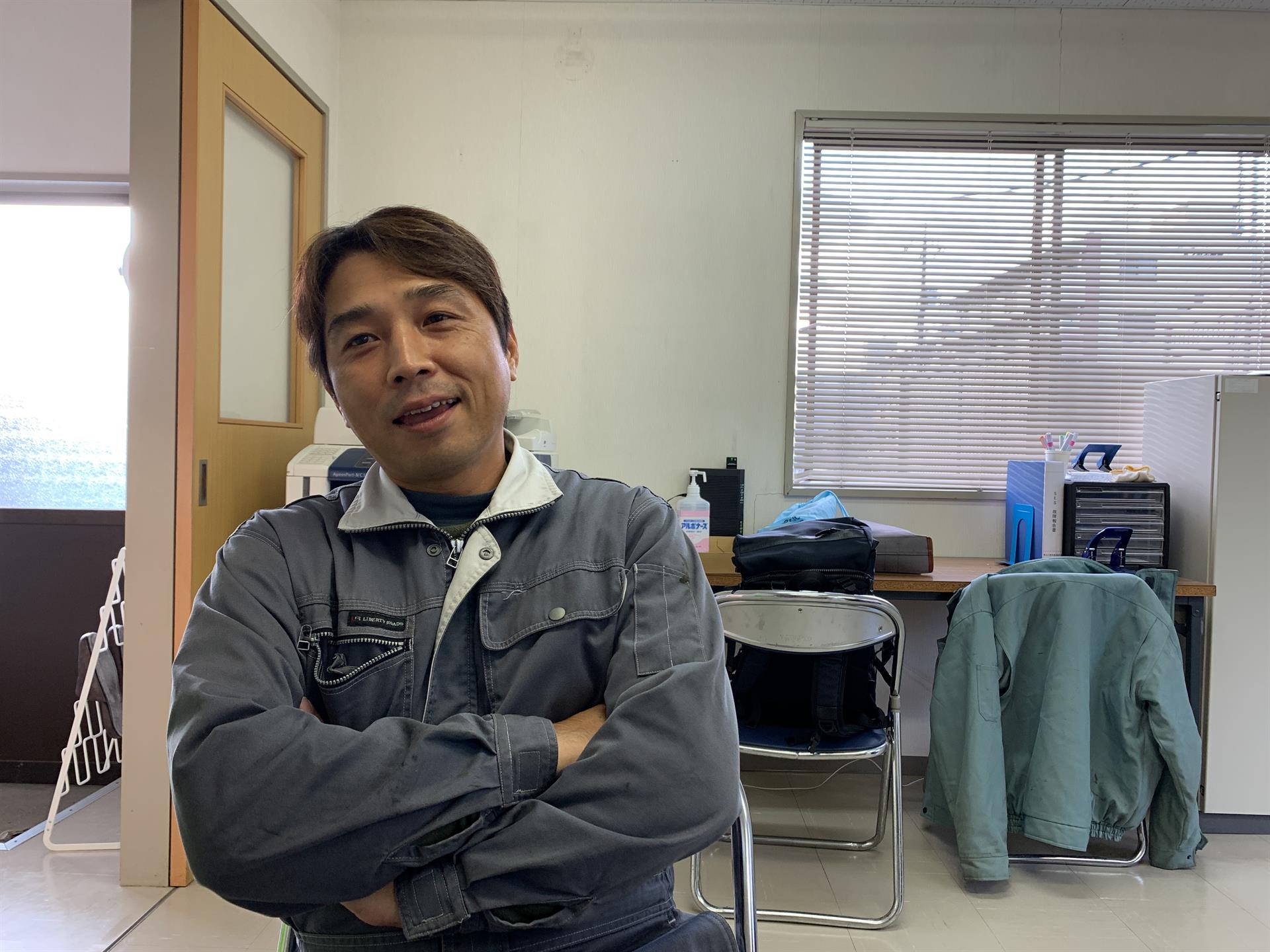
Sleeper exchange: a continuous, fine-tuned process
This is how the sleeper exchange system works: after the site has been prepared manually, the SES 170 suction units clear away the ballast surrounding the sleepers. Now it is possible to remove them. At the start of operation, the sleeper manipulator pulls twelve old sleepers forward in the direction of work. The manipulator removes four sleepers to create an open space of 2,400 mm. The sleepers are rotated by 90 degrees. The manipulator then lifts and transports them to the sleeper lift, which takes them to the first level of the machine. Then, the removed sleepers are transported to a sleeper conveying system and deposited in groups of five.
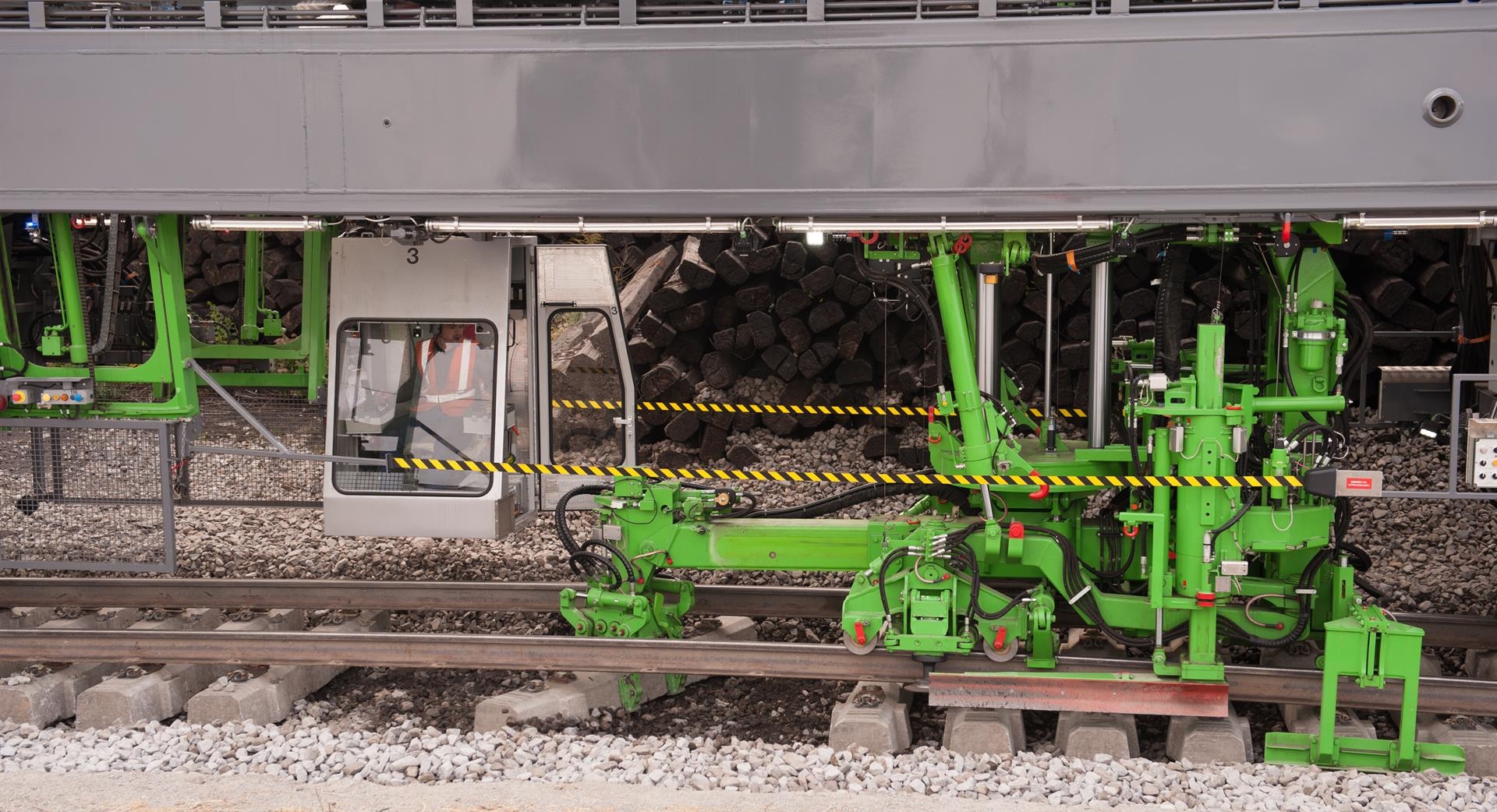
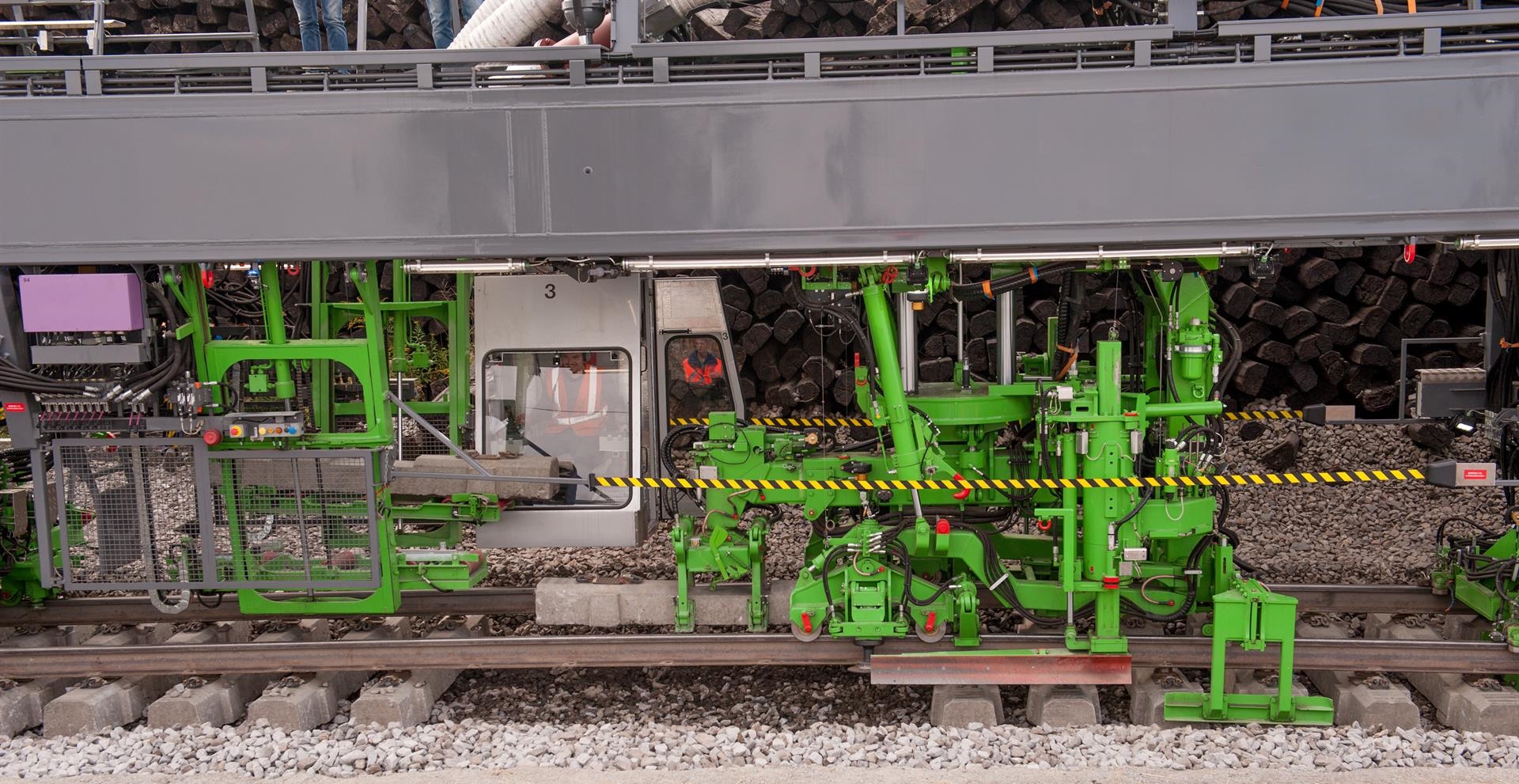
The machine’s gantry unit can transport up to five sleepers at once. It takes them from the sleeper conveying system’s storage area to the loading space on the transport wagon. After the open space has been created, the system switches to continuous operation. One sleeper is removed from the front part of the space. At the same time, a new one is installed at the rear. A fixing unit takes the newly laid sleepers to the correctly centred position. Then, it fastens them to the lifted track. The ballast hopper precisely places the required amount of ballast on the track. The ballast is then stabilised. The open space is closed with new sleepers to allow the line to open for rail traffic during the day.

